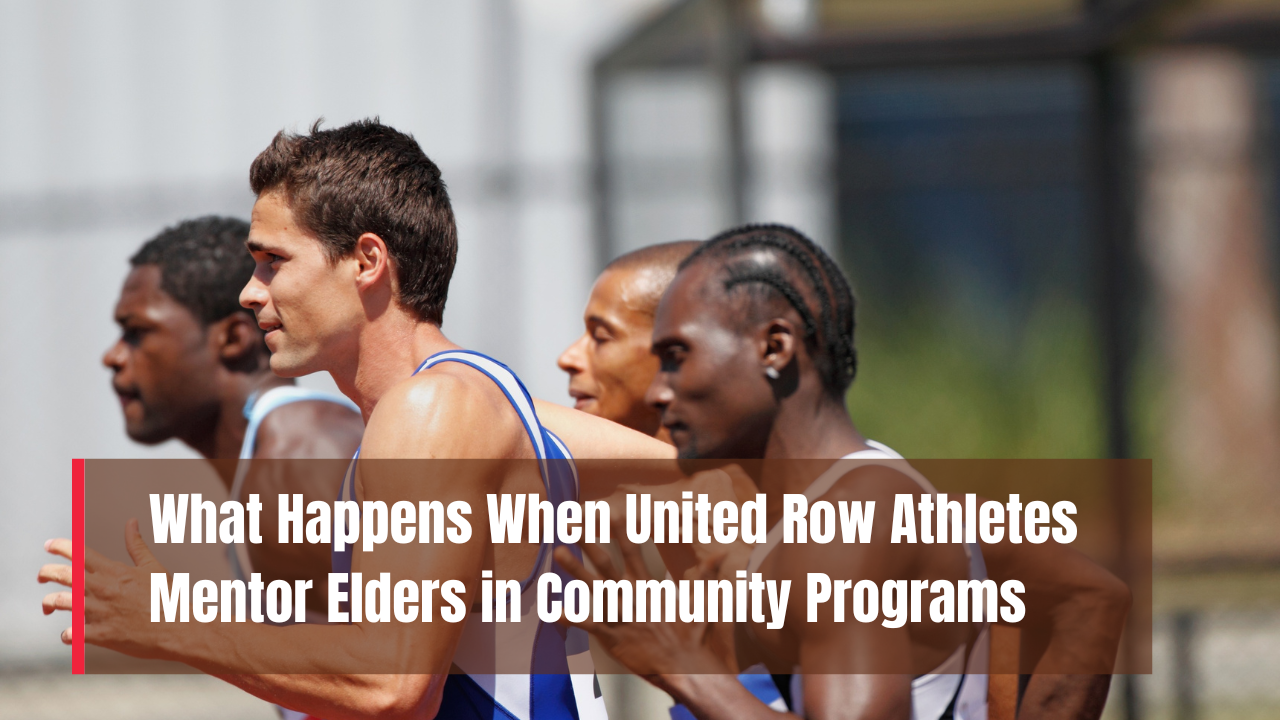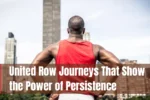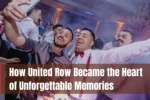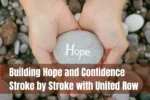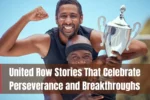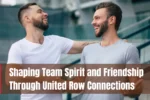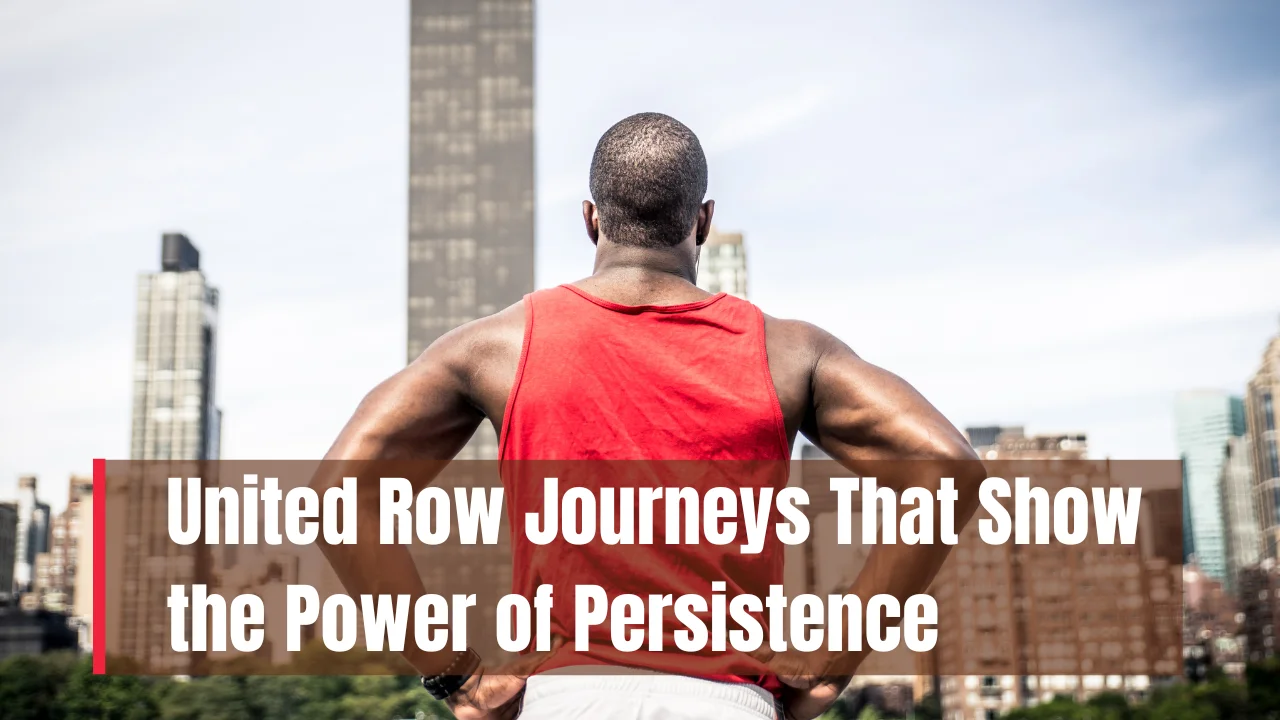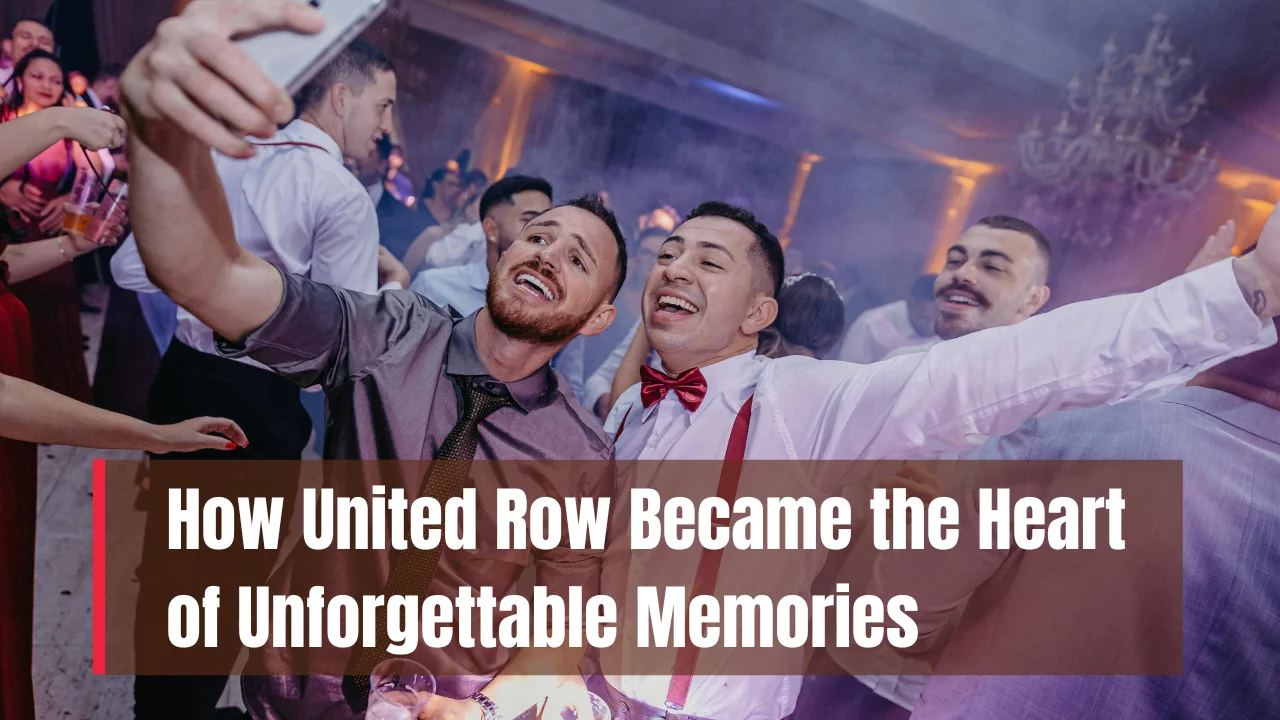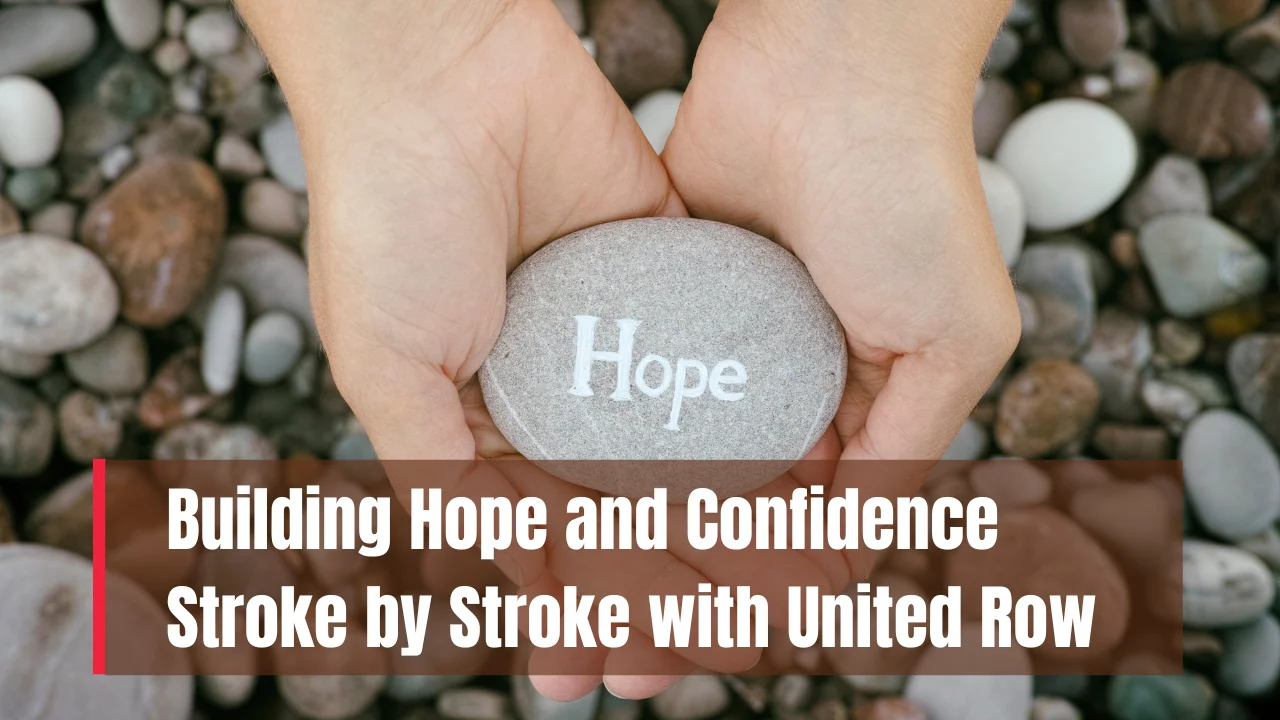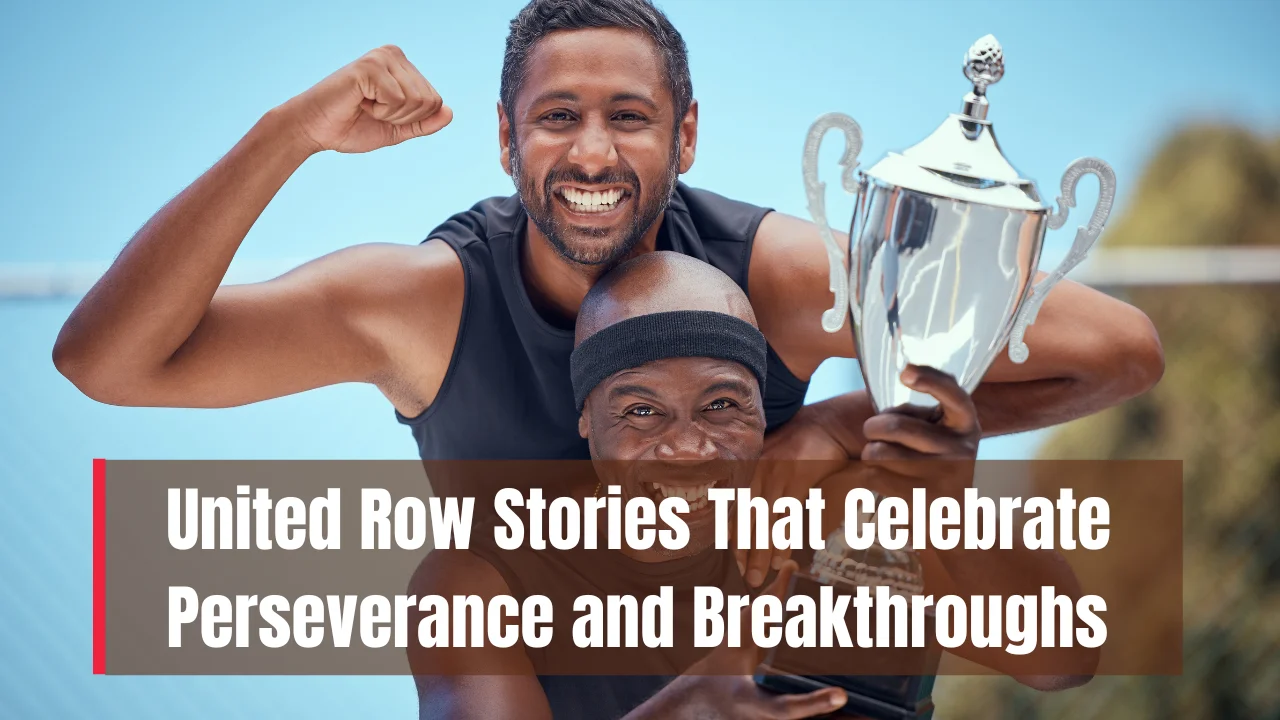United Row Athletes: United Row Athletes are typically recognized for their physical endurance, strategic coordination, and relentless training schedules. But lately, they’re taking their commitment beyond the water and into the heart of local communities. As a surprising yet deeply impactful shift, these athletes are now mentoring senior citizens through specially designed community programs.
In this article, we’ll dive into how this mentorship model works, why it’s gaining attention, and what makes it so uniquely effective. From boosting elder wellness to shaping well-rounded athletes, the program offers powerful benefits on both sides. You’ll discover the emotional and physical impacts, real-life stories, and how this evolving movement is helping close the generational gap in truly meaningful ways.
The Role of United Row Athletes in Elder Mentorship Programs
As part of a growing shift toward community-oriented sports outreach, United Row Athletes are stepping off the boats and into mentorship roles that empower senior citizens. These mentorships go beyond traditional physical training, focusing on emotional support, mobility, companionship, and shared learning. It’s about showing up weekly to encourage, listen, and build consistency for those who often feel overlooked. This human-centered approach is reshaping how we view athletic influence—and proving that leadership doesn’t end at the finish line.
Overview Table: A Glance at the Impact
| Key Focus Area | Insight Summary |
| Physical Wellness | Light fitness routines improve flexibility, posture, and balance |
| Emotional Support | Elders feel seen, valued, and connected to the younger generation |
| Social Interaction | Weekly sessions foster relationships and reduce feelings of isolation |
| Leadership Development in Athletes | Mentors learn patience, empathy, and long-term commitment |
| Community Building | Programs strengthen ties between local sports groups and senior centers |
| Intergenerational Learning | Elders share life experience while athletes share energy and structure |
| Mental Health Boost | Shared activities reduce anxiety and promote joy on both sides |
| Scalable Program Model | Can be adapted by other sports groups for broader community impact |
How Mentorship Builds Intergenerational Bonds
When young athletes work closely with seniors, something profound happens. The conversations aren’t just about rowing or health tips; they’re about life. The intergenerational programs that bring together United Row Athletes and elders create a special kind of bridge—one made of trust, mutual respect, and shared curiosity.
Elders often become more open and lively, inspired by the positivity and energy of their mentors. At the same time, athletes slow down to listen and learn about life from those who’ve experienced more. This exchange helps both groups grow, not just as individuals, but as members of a more connected and compassionate community.
Physical Benefits for Elders
Even light physical activity, when done consistently and thoughtfully, can significantly impact aging bodies. Under the guidance of United Row Athletes, seniors engage in gentle, rowing-inspired exercises that are safe yet effective. Movements are adapted for each participant’s capability, often focusing on joint mobility, core strength, and posture.
These activities contribute to increased confidence in mobility, better circulation, and reduced risk of falls. Importantly, having a dedicated mentor keeps elders more engaged than traditional group fitness classes. This one-on-one attention promotes consistency and motivation—a crucial factor in active aging.
Mental and Emotional Boost for Both Sides
Senior engagement goes beyond keeping busy—it’s about feeling emotionally nourished. Through regular interaction, elders develop strong, trusting relationships with their athletic mentors. These weekly sessions become moments to look forward to, often replacing loneliness with laughter and purpose.
For athletes, these sessions offer grounding. While many of them spend much of their time focused on performance, mentoring reminds them of the emotional rewards that come from human connection. In a way, both groups receive something invaluable: the sense that they matter to someone else.
Community Impact and Program Growth
What started as a few community outreach programs has grown into a larger sports outreach movement. Organizations and rowing clubs across the country are taking notice. The partnership between United Row Athletes and elder care centers is being embraced not only as a wellness initiative but as a model for sustainable community growth.
The more these programs grow, the more they bring together different parts of the community—families, local businesses, wellness advocates, and even healthcare providers. Their collective effort builds a support system that uplifts both youth and seniors, creating a community where care is shared and celebrated.
Two Key Ways Mentorship Makes a Difference
- Improved Social Engagement: Seniors begin to feel part of something again. Weekly sessions offer not just movement, but meaningful conversations, laughter, and shared goals.
- Leadership Growth in Athletes: Taking on mentorship roles helps athletes see beyond competition. They learn to listen deeply, communicate clearly, and support others with care.
Challenges and How Programs Overcome Them
As with any new initiative, challenges arise. Some elders may be hesitant at first, unsure about working with younger athletes. Likewise, not all athletes are naturally comfortable stepping into a caregiver-like role. Differences in communication style or expectations can occasionally lead to slow starts.
However, thoughtful onboarding helps overcome these hurdles. Programs often include basic training for mentors, explaining how to be patient, inclusive, and adaptive. Many centers also pair mentors with the same elders each week to build trust over time. This consistency helps smooth out early discomforts and fosters long-term success.
Stories of Transformation
There’s no better proof of a program’s impact than real stories. One elder shared how, after six weeks of mentoring, she walked up the stairs for the first time in a year without fear. Another athlete admitted that the program changed his idea of strength—it wasn’t just about muscle, but about showing up for someone every week, no matter what.
These deeply personal moments remind us that mentorship isn’t about fixing someone—it’s about standing beside them as they grow. And that’s what United Row Athletes are doing, one session at a time.
Final Thoughts
The partnership between United Row Athletes and senior citizens offers a fresh, heart-centered approach to community health and leadership. This is not just a trend—it’s a movement that shows how sports can give back to society in profound ways. By offering their time, energy, and open hearts, these athletes are creating a new kind of legacy—one that lives not just in medals, but in memories, connection, and real human change.
If you’re inspired by what you’ve read, consider sharing this article or talking to your local rowing club or senior center. You might help spark a program that changes someone’s life—maybe even your own.
FAQs
What kind of training do United Row Athletes receive before mentoring?
They usually receive basic orientation on communication, elder care sensitivity, and how to adapt activities safely for seniors.
Are these programs open to all elders or just active ones?
They’re open to all, with routines designed for a wide range of abilities, including those with limited mobility.
Do athletes benefit from these programs too?
Yes, they gain leadership skills, emotional insight, and a deeper connection to their communities.
Can this model be adapted to other sports?
Absolutely. The mentoring structure can be applied across many team-based sports like swimming, cycling, or track.
How can communities start such a program?
Begin by connecting local rowing teams with senior centers, plan structured weekly sessions, and provide basic mentorship training.
